#the kaines project
Text

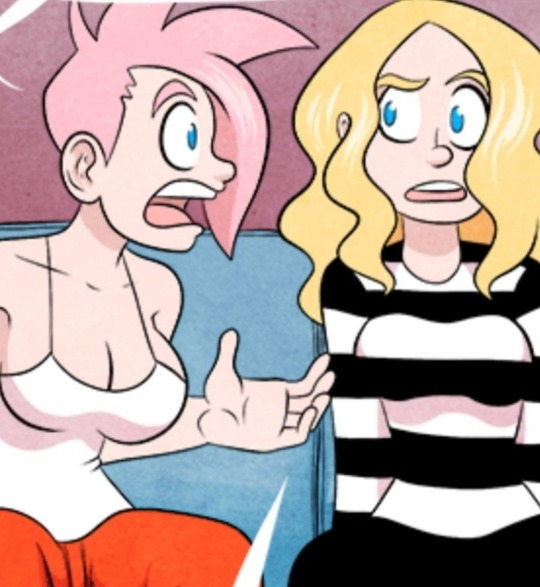
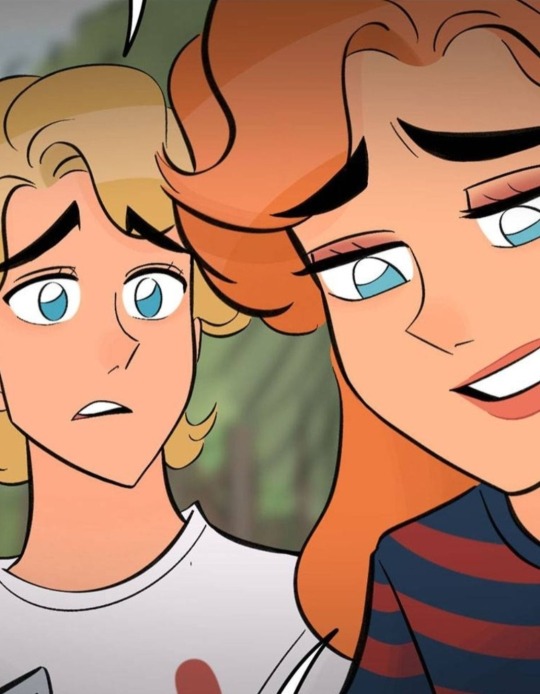
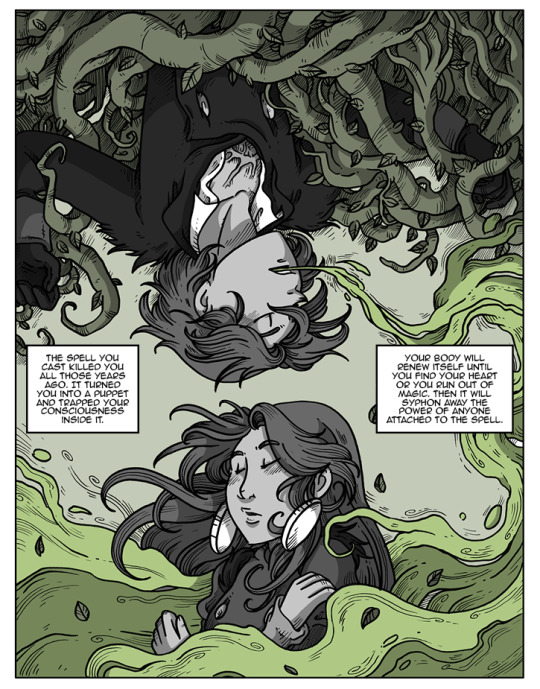




Brenda and David, Selva and Warwick, Chunhyang and Mong-Ryong and the PPPPPP septuplets are qualified for the bracket !
#multibirth tournament#tournament polls#prelims#indie webcomic#web comic#webcomics#webtoon#webcomic#tapas webcomic#comicblr#indie comics#deor#ennui go#jackson's diary#namesake#pppppp#star children#the kaines project#villain with a crush
12 notes
·
View notes
Photo
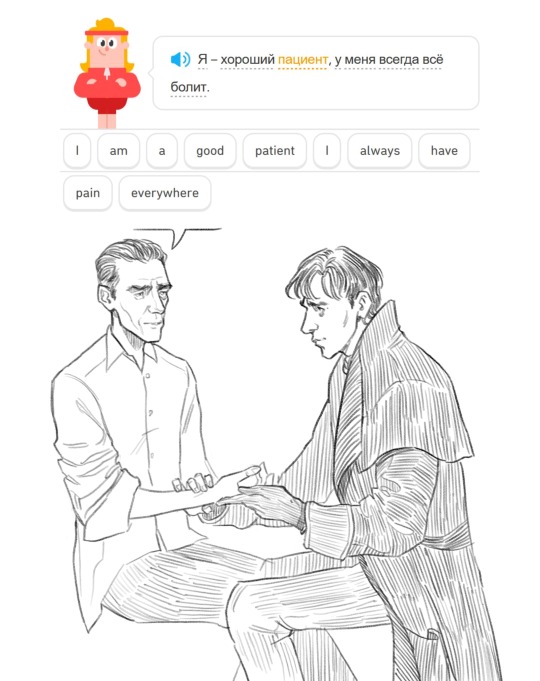
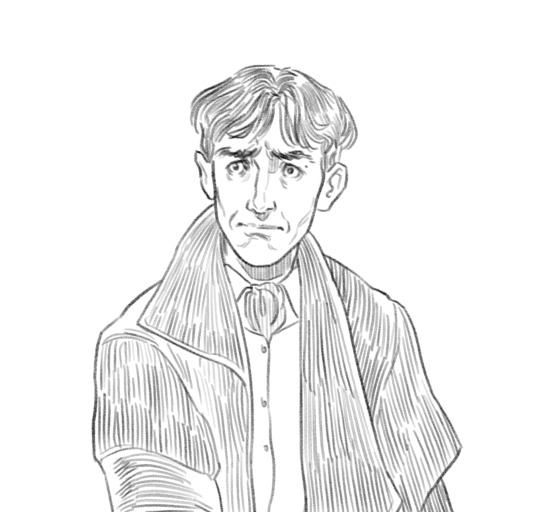
victor kain chronic pain nation rise up (credit to @transdankovsky for this idea :-D)
/ id: two digital drawings. the first image shows victor kain and daniil dankovsky sitting together; daniil is taking victor’s pulse. inside a speech bubble above victor’s head is a screenshot of a question from the duolingo russian course, in which the sentence ‘я – хороший пациент, у меня всегда всë болит’ is translated as ‘i am a good patient, i always have pain everywhere’. the second image shows daniil looking politely horrified. end id. /
#artwork#pathologic#victor kain#daniil dankovsky#this might seem a bit out of left field given that i havent talked about it at all publicly but victor having chronic pain is one of my Most#Established and Important Headcanons and i think about it all the time. i should write something about it but i have lost the ability to#write it seems :-/ but i can still create Images! so here is one :-D#there is a lot of projection involved i will confess but i also think it makes a lot of sense for his character so i am not ashamed of that#not that anyone should be ashamed of projecting i just feel embarrassed when something is Too obvious. baring my soul via the depressed dad#anyway i imagine him to have multiple chronic illnesses and health problems but primarily fibromyalgia in the pain department#but he hasnt really realised that it's abnormal so he hasnt mentioned it to anyone. until he brings it up offhandedly to daniil (as#pictured) and daniil goes through every stage of grief at the same time#hes got problems. hes gottem#as i said it was icarus who had the idea and ive been thinking about it ever since :-D ily ic#thenks duolingo russian course for my life my russian is still incredibly sparse but im tryin. im getting somewhere. very (very) slowly#i hope you are all doing well my dear friends!!! i am so sorry i have been so absent this term has been absurdly busy :-( i miss you all
404 notes
·
View notes
Text
NieR Replicant Collab in CotC!
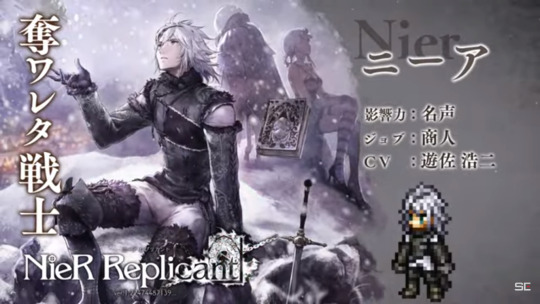
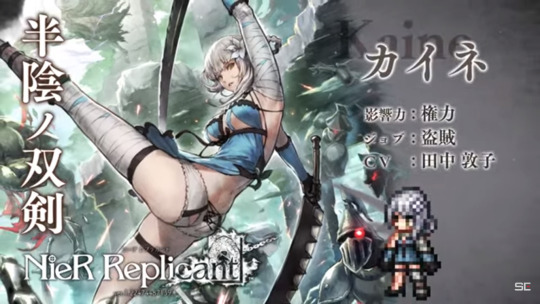
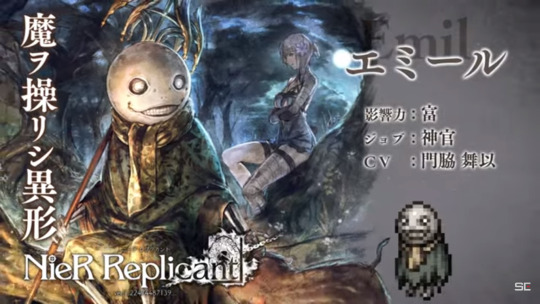
The new collab characters are revealed and it's Nier, Kaine, and Emil.
The characters are also included in my collab project, Project Path Action so if there are any NieR fan artists who want to take one, let me know!
I don't have clear sprites for their Path Actions yet, but I'll get them soon!
That said, A2 is also available as well!
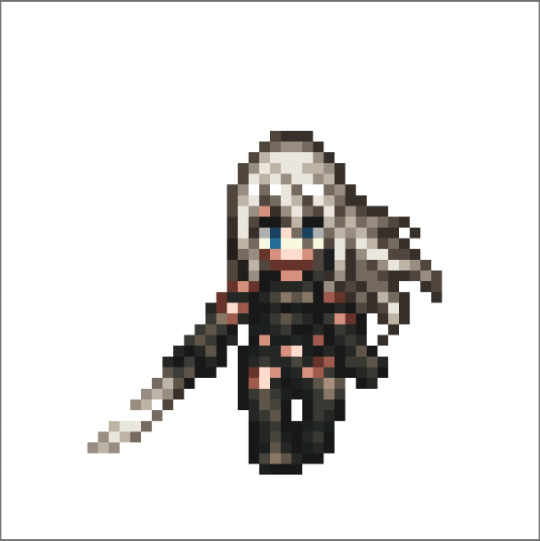
#octopath traveler#octopath cotc#champions of the continent#NieR Replicant#NieR Automata#NieR#nier kaine#NieR Emil#NieR A2#Project Path Action
58 notes
·
View notes
Text
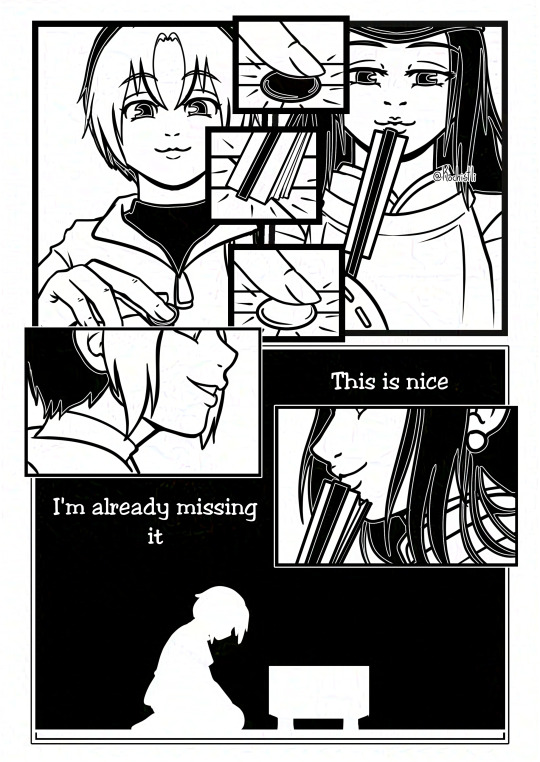
Loss
#hikaru no go#hikaru shindou#fujiwara no sai#Kain projecting their own grief onto Hikaru cuz why not
17 notes
·
View notes
Text
I am not done making shitposts about my new discoveries
#legacy of kain#lok#Kain#meme#shitpost#my art#do not seek quality in this post for there is none of that there#anyway#I've just learned about the potential scenario for the dark prophecy#and I just had to do this#btw y'all should be thankful I actually finished that one because I abandon most of my animation projects
23 notes
·
View notes
Text
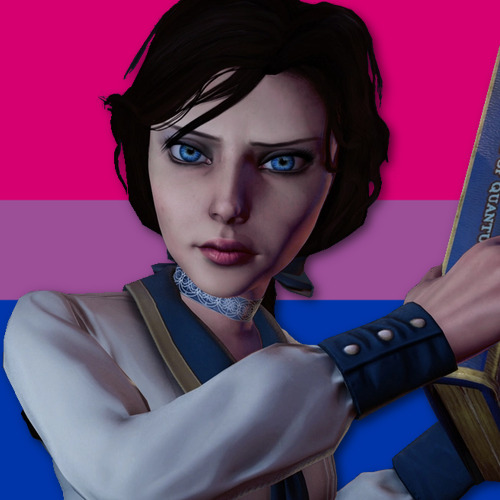

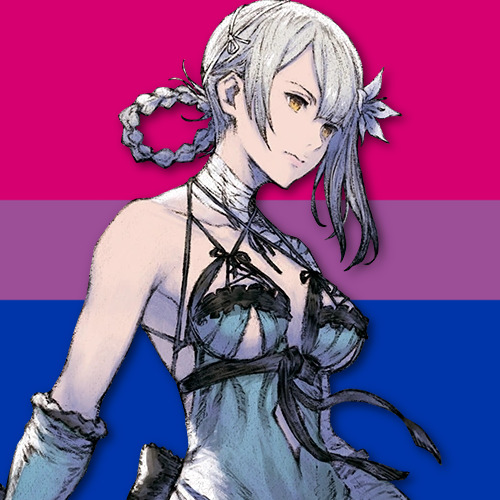


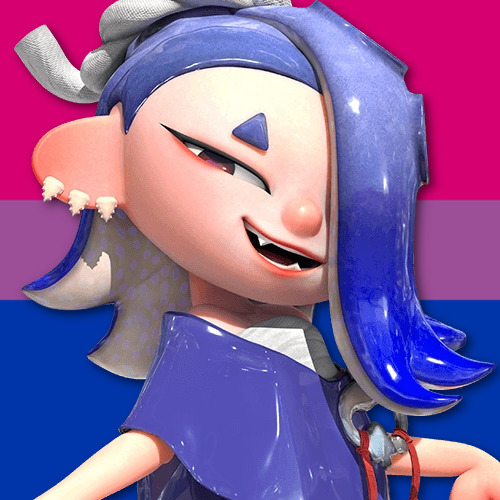
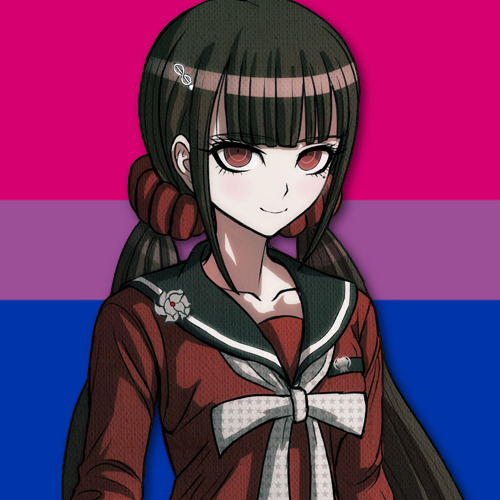


Bisexual Headcanons
Elizabeth Comstock from Bioshock Infinite
Jenny Wakeman from My Life As A Teenage Robot
Kainé from NieR Replicant
Rin Hoshizora from Love Live! School Idol Project
Saki Nikaido from Zombie Land Saga
Shiver from Splatoon 3
Maki Harukawa from Danganronpa V3: Killing Harmony
Raine Whispers from The Owl House
Princess Rapunzel from Tangled
Happy Bisexual Visibility Day!
#Bi Headcanons#Bisexual Pride#Bi Pride#Pride Icons#Celebrate Bisexuality Day#Bioshock Infinite#Elizabeth Comstock#My Life As A Teenage Robot#Jenny Wakeman#NieR#NieR Replicant#Kaine (NieR)#Love Live!#Love Live! School Idol Project#Rin Hoshizora#Zombie Land Saga#Saki Nikaido#Splatoon#Splatoon 3#Nintendo#Shiver the Octoling#Deep Cut#Danganronpa#Danganronpa V3#Killing Harmony#Maki Harukawa#The Owl House#Disney#Raine Whispers#Tangled
41 notes
·
View notes
Text
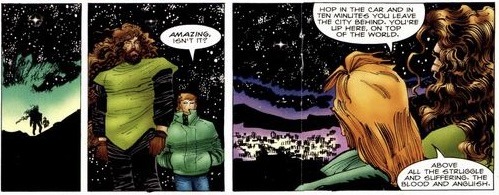



“Intimacies,” Spider-Man: The Lost Years (Vol. 1/1995), #2.
Writer: J. M. DeMatteis; Penciler: John Romita, Jr.; Inker: Klaus Janson; Colorist: Christie Scheele; Letterer: Richard Starkings
#Marvel#Marvel comics#Marvel 616#Spider-Man: The Lost Years#Kaine#Kaine Parker#Louise Kennedy#look at these repressed goths in love#but in all seriousness A) I am choosing to use this as evidence that Kaine has just as much a scientific mind as Peter#(Kaine just often times…prefers to fight his way out of/through a situation)#and B) due to the brevity of this project I at least never quite got attached to Louise but the writers do make a very admirable attempt#both at making Louise a comparatively fleshed out character and as the kind of woman that could enter any sort of romantic relationship#with a guy as…complex as Kaine#ultimately she does pretty much get fridged (as seems to be par the course for female detectives in Spider-Man comics)#but those last text boxes…man they almost make me feel something
20 notes
·
View notes
Photo


idsmile
#uh sketch is frm kaine but i lined and colored. learned i hate coloring clothes.#mizuki akiyama#akiyama mizuki#proseka#prjsk#project sekai#hatsune miku colorful stage#my art#im not tagging the scars btw even if u ask
8 notes
·
View notes
Text
67gb of 1440p60 Soul Reaver footage and no will to start working on it. Where are you, Heather of the olden days, that could spent 10 hours a day on video editing...
Starting Soul Reaver 2 soon (possibly tomorrow because it's one of my favorite games of all time - hard to resist the urge), so my HDDs will only get messier from here on out <3
#the best part is#i don't even know what i'm trying to achieve!#i love having a reason to replay legacy of kain#will probably make some gifsets#and i plan on doing a beautiful tribute video for raziel's arc#it has affected me on a personal level and is partially the reason for who i am today#but it's a big project that would ideally require 2 recorded playthroughs for each game#just to be sure i have enough footage - with and without bgm#reminder to buy more storage#text.qd
2 notes
·
View notes
Text
A documentary about Crystal Dynamics' 30th anniversary.
youtube
At 41:25 they start talking about Tomb Raider
#Tomb Raider#Crystal Dynamics#Legacy of Kain#Lara Croft#Kain#3DO#Gex#Blood Omen#Whiplash#Deus Ex#Deus Ex: Clan Wars#Project Snowblind#Video Games#Core#Tomb Raider: Legend#Tomb Raider: Anniversary#Downfall#Rise of the Tomb Raider#Marvel's Avengers#Marvel#Avengers#Crystal#Gaming#Youtube
3 notes
·
View notes
Text
So I just move out to a new place (for a new job) and I ended up buying a new batik cloth online (as a part of the work uniform).
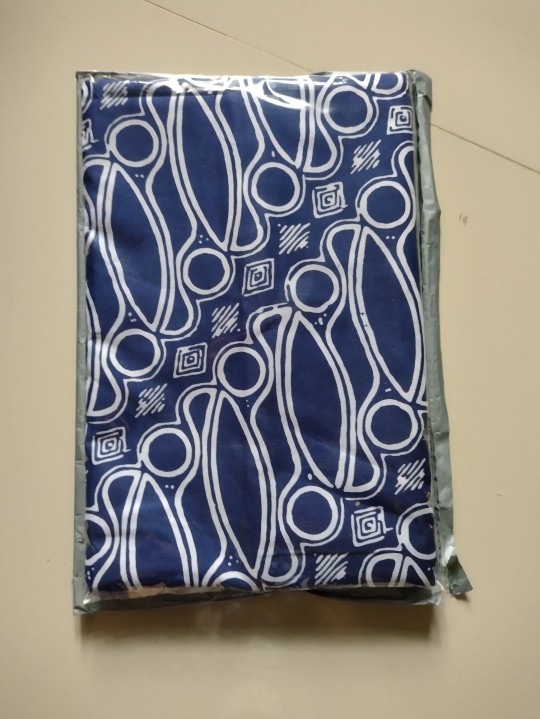
Given that this is a printed batik (as opposed to hand-drawn), it was pretty affordable. Turned out however that it was sent with edges not hemmed in (...that's what one gets for buying cheap I guess 🙃)
(just to be clear, batik clothes usually come in already hemmed on the edges (the short sides especially), especially those sold to be worn as wrap skirts. So yeah this struck me as a bit unusual, getting an unhemmed batik cloth 🙃🥲🤦🏾)
At first I was thinking of bringing it to the tailor to hem the edges, but then I thought...well why don't I hem the edges myself? Hand sew the hems? 🤔🤨👀
.
And that's what I exactly do lately

This is the edge that got hemmed in first. Mind you that the last time I hemmed a fabric was when I was sewing my own face mask (back in the early days of the pandemic... 👀) and I was hemming a knit fabric (with no iron to boot 💀) so needless to say that my last hemming session was not a fun time 🙃💀🔥.
This time around however I have an access to an iron, so I was able to press the edge before seaming it (and it was woven fabric, so... I had an easier go at it 🥲)

On the second short edge I managed to fold it (twice) more thinly than the first one. I tried not to take in lots with the hem, and I only realized that as I finished hemming the first edge 🙃. This time I managed to seam the running stitch more densely as well.
But that's not all!
For the long edge I learned how to seam a rolled hem (for the first time!), and after a bit of a false start I managed to pull it off! 😏😺
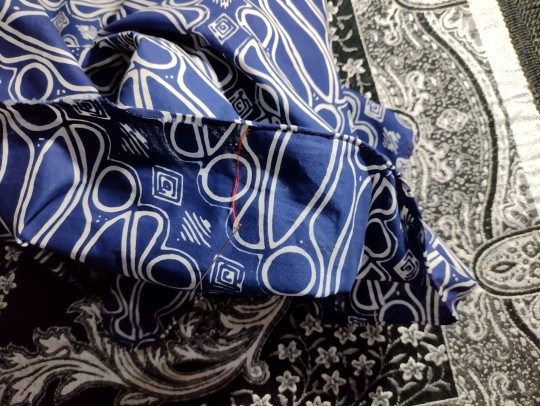
With how slowly I seamed them at first I was worried I couldn't finish hand hemming this in time (it's still 2 weeks away until I wear the whole ensemble, but still...😩), but yesterday I managed to finish the first long edge (I started working on it on Friday). The photo above is the other long edge, and as of this post I already seamed about 70% through.
Needless to say I can barely wait to finish hemming my cloth! 🤭😺
#sewing#hand sewing#kain batik#indonesia#i told you there's going to be more than just knitting here#i did bring my knit projects and yarn stash with me but i haven't had the mood 🙃 to work on them LMAO RIP
0 notes
Note
Kain ?
ok kain is a little BITCH i love him sm
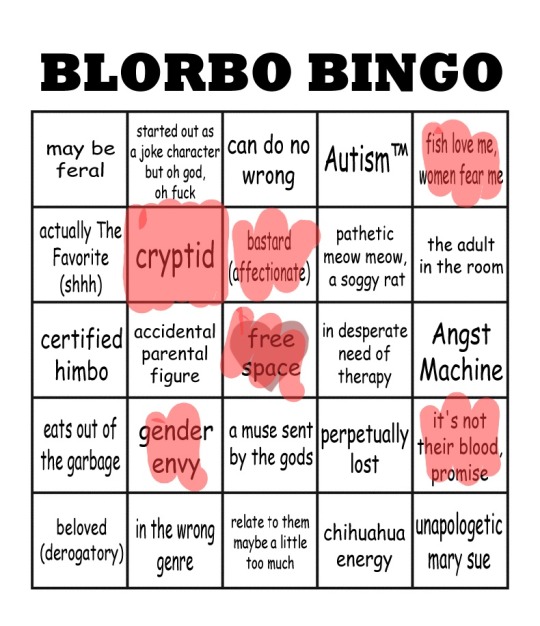
not many fit him but he's just a guy who happens to be dead, but, ykno. he's a ghost/undead that runs the tavern, always kinda unsettling in a "that ain't right" way, but he's pretty handsome and the tavern is real good, so nobody pays any mind
#emord answers#c: Kain#thank ya!#almost put in the wrong genre but honestly my lore /is/ half-unsettling stuff. so#fun fact he was my second ever being project. ginger/flaxen/flaxen is and has forever been horrifically hard to come by
1 note
·
View note
Text
its like so crazy how every ff protag is trans.
#this post is specifically about the wol and cecil and tidus and also kain and themis.#and ardbert.#yes im projecting.#if i cant be out of the closet then THEY can.
0 notes
Text

A map of the galaxy in 9 ABY in @gabajoofs and my Star Wars timeline. By this point, the Galactic Civil War is considered by many to be effectively over, as the centralized Galactic Empire no longer exists, with only a handful of remnant factions remaining. The New Republic governs much of the galaxy, but their hegemony is not singular, and several other groups exist which are able to project power in the galaxy.
The factions which hold territory include:
The New Republic: After the Battle of Yavin, the Rebellion restructured itself into the New Republic, initially based on Chandrila. Over the next several years, the Republic waged a campaign against the fracturing Empire, securing the Galactic South and the Core before finally liberating Coruscant in 7 ABY. A series of escalating scandals brought down the leadership of Mon Mothma the following year, and she was succeeded in her role by Leia Organa, who pushed through governmental reforms and currently serves as the Republic's Chief of State, with Cal Omas as her Prime Minister. The Republic now sits at a crossroads, with several political factions vying to influence its destiny - including a right-wing political coalition led by Mon Mothma's daughter Leida.
The Pentastar Alignment: The largest and most successful of the post-Endor Imperial splinter states, the Pentastar Alignment, known in Republic space increasingly as simply the Imperial Remnant, controls most of the galaxy from Ord Mantell northwards. It has been so successful largely by avoiding conflict with the Republic and the Mandalorians, instead targeting smaller Imperial warlords including Warlord Zsinj. Pentastar has absorbed much of the remaining Imperial fleet and many of its greatest remaining military minds, including Grand Admirals Martio Batch and Gilad Pellaeon, the latter of whom acts as supreme commander of the Pentastar fleet. Governed from Bastion, the Pentastar Alignment is led by Ardus Kaine, former Grand Moff of Oversector Outer. Though he has taken the title of Legate in reference to military leaders of Bastion's ancient history, in all but name he is Emperor, and inspires great loyalty in his men.
Mando’ade Aliite be Te Anila Grat’ua Mand’alor (United Clans of Mandalore): After Endor, Death Watch veteran Vasili of clan Bev’miir, who had spent several years uniting the disparate Mandalorian clans, launched an assault on the Empire's holdings in Mandalorian space. After securing Mandalore, Bev'miir, now known as Mandalore the Uniter, waged war to expand Mandalorian space to historical heights, helping to crush the Warlord Zsinj and destroy the power base of the Hutts. Since securing the borders of Mandalorian space, Bev'miir has been content to rule his worlds in relative peace, reforming Mandalorian society and restoring the supremacy of the clans. He recently signed a treaty alongside Chief of State Organa in which the Republic recognized him as the legitimate representative of the Mandalorian people and his government's sovereignty over the worlds it controls.
The True Mandalorians: Supporters of Bo-Katan Kryze's claim to lead the Mandalorians, including her own Nite Owls and several smaller clans, united as the True Mandalorians and attempted to gain their own foothold to unite the Mandalorians. While the Republic recognized Kryze as the true leader of the Mandalorians and offered support, ultimately Kryze's forces were only able to secure Onderon's moon Dxun, losing the planet Jabiim to Bev'miir's faction. Now, languishing on the jungle moon, they have lost even republic recognition, and their future is uncertain.
The Hapes Consortium: The small, independent enclave of the matriarchal Hapans has gone unmolested since Endor. Chief of State Organa is planning a diplomatic mission in the hopes of bringing them into the Republic.
The Greater Maldrood: Treuten Teradoc's Imperial remnant, governed from Togoria, has been hit hard in the campaigns against Zsinj and the Mandalorians, and struggles to protect its remaining borders even with Grand Admiral Rae Sloane in command of its military. Reluctantly, Teradoc has opened annexation negotiations with the Pentastar Alignment.
The Neimoidian Socialist Confederation: After the election of socialist Thog Rutak as Trade Monarch, Neimoidian society was thrown into a civil war in which the socialists emerged victorious, and set about reforming Neimoidian society and nationalizing the Trade Federation. The confederation has grown to include much of the former Corporate Sector after its own socialist revolution, and is aligned with the Republic as an independent affiliated observer state.
Zakuul Space: The ancient worlds of Zakuul and Iokath have remained uncontacted for centuries, and some say they no longer exist. Others insist that they are out there, filled with riches and waiting to be plundered.
The Chiss Ascendancy: In the Unknown Regions, the Chiss control their territory and watch for threats known only to them. They have not established relations with the Republic.
The New Confederacy of Independent Systems: After Endor, rather than joining the New Republic, a group of former Separatist worlds, led by Magisterial Porro Linn of Balan-Quod and mainly from the Tion Cluster, formed a revival of the CIS. They have received little support, and have not normalized relations with teh Republic.
The Proto-Sith: A number of dark side factions, including the Knights of Ren, the Prophets of the Dark Side, the Lost Tribe, elements of the Reborn and the Inquisition, and the Sorcerers of Tund have gathered in what was once Sith Space and the Centrality. The Rule of Two died with Palpatine and Vader at Endor, and it is time once again for the Sith to cheat death...
Black Sun, the Iron Triad, the Exchange, et al.: In the wake of Endor and the decimation of the Hutts, organized crime has grown in power. Several worlds in the Galactic south and former Hutt Space are now openly run by crime organizations, in particular the Iron Triad, founded by former Imperial officer Ubrik Adelhard, which is based on Klatooine. After the death of Prince Xizor, the leadership of Black Sun remains unclear.
The Central Committee of Grand Moffs: A small group of Grand Moffs working in concert with Supreme Slavelord Trioculus of Kessel - who claims to be the Emperor's son - has monopolized the spice trade with a small fleet of Imperial ships, conquering the Pyke Syndicate and incorporating it into their own operations. They are considered of least concern to the Republic.
Hutt Space: Campaigns by the Mandalorians and Iron Triad, and a revolt of the Evocii on what was once Nal Hutta, have destroyed most of the Hutts' power in the galaxy. Individual crimelords such as Dertykop of Taris or Teemo of Tatooine still exert power, but the Ruling Council has retreated to Varl and the Bootana Hutta, and only a sliver of Hutt Space remains.
The Imperial Royalist Confederation: After Ysanne Isard launched a coup in late 4 ABY, Sate Pestage and Mas Amedda fled Coruscant for the fortified Deep Core, where they set up their own government on the Emperor's throneworld of Byss. There Amedda rules as Imperial Regent, surrounded by sycophants, and the Republic is content to let him stew.
Other factions which hold no territory but still have a measure of influence in the galaxy include:
Moff Royen's Imperial Remnant: A small fleet of ships which remains independent of the other major Imperial remnants, mainly patrolling the Red Hand Cluster.
The New Jedi Order: After a quest of several years to uncover secrets of the Force and find Force-sensitive recruits, Luke Skywalker, now a Jedi Master, has reformed the Jedi Order, heading the new Jedi Council. The location of his temple is a closely-held secret, with rumors placing it anywhere from Yavin to Ossus to Tython to the mythical world of Tanalorr.
The Children of Ghorman: The Republic Commision for the Prosecution of War Crimes and Crimes against Civilization was established in 6 ABY for the prosecution of Imperial war criminals. Valarr Ulgo, an Alderaanian former ISB officer and member of Republic Intelligence, formed the Children of Ghorman in order to secure these criminals, a group of Rebel veterans who were all impacted personally by Imperial atrocities with the sole objective of capturing those Imperials who were beyond the Republic's reach and bringing them to justice.
The Mining Guild: The fall of the Empire was a boon for the Mining Guild, which regained its independence. Under the leadership of Athor Skarhill, the Guild has moved in a left-wing direction, and affiliated itself with Garm Bel Iblis' People's Union Party.
125 notes
·
View notes
Text
the Pathologic essay I wrote last year about why I think the Haruspex route Utopian ending is the overall best ending, I still stand by what I said however this somewhat structured essay holds less than half about how much I care about this ending.
In the game Pathologic there are three different routes, each corresponding to each healer. The story also has several endings, one for each of the bound (characters which as the name implies, are bound to their individual healer) as well as a bad ending if the player fails to find any sort of viable solution for the plague. This ability to choose the ending belonging to another healer is an incredibly telling one on the part of the characters, especially when it comes to the Haruspex, and his ability to choose the Utopian, and the Bachelor’s ending. This ending also works quite well when considering the wider narratives of the Haruspex’s route, including the future of the town, his role and sacrifice, and the metanarrative of the story.
In all three routes there lays quite a large weight on the future of the town, as of course it is the battle of the ending, of which vision of the town would become reality. The Haruspex’s bound is known as the Termites, a collection of children who learned from Isidor Burakh, Artemy Burakh’s father. Their ending is the one in which the Polyhedron is destroyed and the town stands, ready to be developed by a future generation. However, it is discovered in one of the other routes of the story, the Bachelor’s route (we will get to him later) that the source of the infection lies underneath the town, in the pockets of blood which have collected beneath. This means that the plague can never be fully defeated unless the town itself is destroyed, as the Polyhedron has already pierced the ground, meaning that there is no returning the plague to its dormant state, trapped underneath the earth. On the other hand, the other side of the river is entirely uninhibited, clean of the plague. This complete lack of prior development also means an ability to create a new town.
The new town built after the Utopian ending is one made, as the name implies, by the Utopians, however, the asymmetrical narrative changes depending on which healer is the one being currently played by the player, so following that logic, the endings would be influenced as well. This would hypothetically mean that the vision Capella has for the future of the town, one in which the Haruspex is a leader of the kin, and the town would be led by the children, could still find its place within the new town. There are also direct connections between the Utopians and Termites as well, such as Casper Kain, also known as Khan, of the termites, being a termite while also being part of the Kain family, which means that despite the rocky relationship amongst the family, he is still a heir to that power. Capella as well, is the sister of Vlad the younger, who at that point is the eldest Olgymsky remaining, and the projected leader of the town’s industry in the new town, she has also planned her engagement to Khan, meaning that she would then have a connection to Kain family as well. Apart from these direct connections, the entirety of the bound is important, each member, independent of faction, still able to impact the future of the town, and in order to achieve the Utopian ending in the Haruspex route both the Termites and Utopians must be fully healed. However these are the more hypothetical results of the ending, in the game itself the cutscene remains the same for whichever healer chooses the ending, which can imply the uniformness of the ending. However even though the Utopian ending described in differing routes can still serve the Haruspex well, the utopia described in the Bachelor route is explicitly stated to need the Earth, “…it's all about what's down below. It requires dirt. A ruby firmament needs something to sit atop-otherwise it'd topple.” This coincides well with the future Capella predicts, with the Haruspex taking his place as the foreman of the Abattoir, showing that there is, in fact, a place for the “earthly and the humane” in the new town. The connections described within the route, the needs of the utopia, and especially the influence of the Haruspex himself, would allow the Utopian ending to be a fitting future in the Haruspex route.
Another very present aspect of the Haurpsex’s route is that of his sacrifice, the idea that he must destroy, kill, something or someone in order for his ending to occur. This concept is mentioned a few times, however it is only fully explained by Katerina Saburova, “You will make a sacrifice. There will be rivers of blood, and that will be your doing.” While I can go into a whole other essay about the ideas of the sacrifice (and I do), we will for this essay’s sake, take the sacrifice as it’s surface level in pathologic classic, and how it’s implications mean that choosing the Utopian ending would have better long-term effects and also complete the Haruspex’s journey.
The Haruspex’s story follows a more classical hero’s journey rather than the Bachelor’s tragedy, with the abattoir symbolising the other world, and Oyun assigning the quite literal trials the Haruspex must go through. Once the Haruspex defeats the Foreman and becomes the new Foreman of the abattoir, however, he is still not respected by the butchers, who require a sacrifice from him. This duality of both the mistress’ prophecy and the requirement of the butchers also shines a light on the Haruspex in Pathologic Classic, someone who knows that he is of two worlds, however also a person who takes pride in both of them, and brings them together.
In the Termite ending the sacrifice is not fulfilled, the Haruspex is not allowed access to the blood, the plague looms as a remaining threat, and the Polyhedron still falls, for nothing.
Unlike in Pathologic 2, where the Polyhedron is quite literally piercing through the heart of the Earth, slowly killing her, in classic it is nowhere near that fatal, still harmful, but not fatal.. This important distinction is also important to make with the fact that while the blood would still seep out from the open wound if the tower were to fall, it would be limited, and would dry out at some point, while on the other hand, completing the sacrifice would allow the Haruspex access to the blood in the Earth, as the butchers would allow him to find the hidden reserves.
The sacrifice herself, Aglaya Lilich is someone already doomed by the powers that be, a doll loved by their mother and so hated by them, she dies in every ending but the Termites’. There is, of course, a point to be made about the theme of a woman having to die for a man’s journey is not a good one, and choosing this ending would feed into a harmful cliche, however, her death is something she herself understands, and although she urges the Haruspex not to make it, she acknowledges that she is meant to be the sacrifice, that choosing this choice will be enough, “If you lead him to victory, you may consider your sacrifice made. You return to the exultant butchers, triumphant.” Her death is not regarded as a simple shock factor to the end of the story, it is the pivotal choice the Haruspex must make. This is also shown in the Changeling route, where saving Aglaya is seen as an act of deceit, as even Clara’s ending, which saves the town, requires Aglaya to die, as Aglaya is a ‘queen’ an important piece on the board at the end of the game, her life only allows for the Termite ending, only allows for the Haruspex to lose his standing within the kin, and only allows for the sacrifice of the Polyhedron.
The Polyhedron is viewed as the sacrifice in the case that the Haruspex seeks to save Aglaya, however would it even work as one? The sacrifice needed is one of equal value to the Udurgh, the body that contains the world, and if the Utopian route is the one followed, the Udurgh is Simon Kain, and so the sacrifice must be someone who is more than human, and yet human. The Polyhedron, on the other hand, contains no human element, yet, it is the container for a human soul, a chimaera of living and nonliving, however in the Termite ending it is empty, and therefore cannot serve as sacrifice. Both Katerina and Capella’s opinions support the Bachelor’s argument in favour of the Polyhedron standing as well, Katerina outright claiming that “ I know for sure that you are to destroy a woman…” However, seeing that Katerina’s prophecies are often wrong, this statement must be taken with a pinch of salt. On the other hand, Capella clarifies that while Simon is merely a man in the current time, however, “Had Simon been reborn though, had he transferred his spirit to a new vessel-a body huge, perfect, and able to let others in... then he could have been called that.” Well, that rebirth, that new vessel she describes just so happens to match up incredibly well to the Polyhedron, this means that for the Udurgh to exist, for the Haruspex to fulfil his purpose, he must let the Polyhedron stand, must let Simon become the Udurgh. These ideas of sacrifice, of fate, and most importantly, of duty and purpose, greatly define the Haruspex’s story, and the Utopian ending is the only ending which gives it the needed satisfaction by its end.
All of the prior points about the town and the sacrifice have been made with the greatest levels of constraint I was able to amount, this paragraph, admittedly, will be much more personal, as the reasoning it presents was the initial reason for my appreciation of this ending. Simply saying, this paragraph will discuss this ending and the Haruspex’s connections, specifically the connection to the Bachelor. This entire essay could have been written only about this, specific subject, however, there was much more to be said about this ending, and the exercise in restraint was appreciated, despite the, challenges (No Zero I cannot give into the g urges early, fruit.) This paragraph will discuss the relationship between the Bachelor and the Haruspex (of course) as well as the metanarrative of Pathologic classic, especially when it comes to the ends and in considering the Bachelor route in comparison to the Haruspex one.
During the Bachelor run, there is not a single chance to access the abandoned workshop the Haruspex works in, even trying to teleport into the workshop will fail, This comes with the precedent that as the Bachelor, you will not meet the Haruspex until the fifth day, from which point on he is only truly present for days 5,8,9, and of course, day 12. This is of course, a great disservice and the Pathologic 2 route should really have more Haruspex in it, however on a less tangential point, it a great difference from the haruspex route, in which the Bachelor appears for almost every single day of the playthrough, The Bachelor is likely to be the character the player interacts with the most, and over the game the connection between the two characters grows over time, with the Bachelor switching to use Artemy Burakh’s first name. However this closeness between the two is present throughout the entirety of the route, from the very first line the Bachelor speaks to the Haruspex (We will get to that later) to even the descriptions of quests and locations which the Haruspex takes note of, even I was surprised at just how much there was between these two in my first playthrough. All that builds to the point in which these two characters, at the very least, care for one another, deeply enough that the Haruspex has multiple dialogue options which are explicitly supportive of the Utopian ending within his Cathedral discussion with the Bachelor, with all but two of the dialogue branches allowing him to ask the Bachelor for his advice, and only one serving as a direct rejection. And that is what choosing the Termites ending in the Haruspex route is, a rejection, all throughout the route the Bachelor will attempt to convince the Haruspex of the validity of his ending, and in the Haruspex route, the Utopian ending is incredibly tied to the Bachelor, to Daniil Dankovsy, with the implication that if tower, if the last remainder of his research will not survive, that neither will he. Much like Aglaya, his fate is tied to the aspect of the town he is bound to protect. The Bachelor, who, while still placed as more antagonistic, still has his choice, his option for the ending still weighed as equally as the Inquisitor’s, the story places them as equals, “Two diverging pairs of decisions. Both pre-determined…” Which also clarifies that the Utopian ending was never less free than the Termite one, as they are both pre-written, scripted.
This leads into another extremely important aspect of Pathologic Classic HD, the meta, not only can you be reminded twice per round that the story is not real, but multiple characters and scenarios note that this is still a game, still a story the player is playing a part of. A big part of the meta story is the fact that the town is in fact, a sandbox, and the characters are merely dolls. The Polyhedron is a water container which was stuck into the sand, and the water within it had caused a mold, causing the sand pest within the reality of the characters. Removing the tower would help nothing; the mold has already spread, the only option forward is to remove the sand, or play somewhere else, which is what the destruction of the town means, the Utopian ending is the only one which actually, truly addresses this.
Another very meta aspect of the story is the relationship between the Haruspex and Bachelor, which is seen in the very first line spoken from the Bachelor to the Haruspex. The order the game suggests the routes is to begin with Bachelor, continue to Haruspex, and end with Changeling, and viewing the story as one continuous thing in that order adds a lot of depth to the story, with, “ Yes... Far be it from me to call myself a person of mystical inclinations. However, when I look at you, I get the feeling that nature is playing jokes on us. It's as if both the left and the right hand have clutched the head to realise for the first time that they are two parts of a single whole.” The Bachelor quickly disarms the player, not only is this statement a clear representation of the fact that they are two parts of a single whole, they are all healers, all part of the role the player plays, but this line is just plain out not something to say to someone you just met. Dankovsky continues his, less than normal interactions towards the Haruspex throughout the route, to the point that two of them have the closest connection here than almost any other two characters in any route, to the point even the developers themselves reflect upon it in that same dialogue I mentioned before, “Two diverging pairs of decisions… And then, you see, there were also feelings involved... Love.” While this can be applied to Aglaya instead, in the context of the conversation, which is Clara asking the developers about the two other healers specifically, that simply would not make sense. There is a lot more textual and meta evidence about these two, but I am straying off course too much already and this paragraph is already very very long, so we will just move swiftly back to the actual point of the essay :) (BUT YES I COULD WRITE A WHOLE ENTIRE THING ABOUT HOW DANIIL IS WRITTEN AS A LOVE INTEREST IN THIS ROUTE)
Let us not forget, however, a reason as to why the Bachelor wishes to destroy the town, and that is that Daniil is incredibly petty and jealous of Aglaya, from the initial curiosity at their initial meeting, “...She was so impressed by your dignified demeanour … What did you tell her that touched her so much?” To the outright spiteful, “My dear Burakh, she is your sacrifice! I don't think it is at all necessary to slit her throat with your own knife … if the town is destroyed, the head of Aglaya Lilich will be separated from her shoulders in less than a day.” He also partially agrees with Artemy that he seeks to keep the Polyhedron out of spite. However one must take into consideration the Bachelor’s route, in which he is consistently used and betrayed, the biggest offender being the Inquisitor herself. The only person who does not do so is the Haruspex, so it makes sense he would do quite literally anything to keep that being the case.
The fact is, Daniil Dankovsky suffers, in almost every single ending he is not at a good place, all of the endings from his own route for one, as that route is quite literally a tragedy, as well as the fact that Eva is dead in it, that also goes for Changeling route endings, as well as the fact that in that route he is in general incapable of a happy ending, which only leaves the Haruspex’s route for him to have any possibility of contentment (sorry g boy) Immediately we can also rule out the Termite ending in the Haruspex route, and in the Humbles ending he is the only one without a place, the Haruspex, as the Foreman, would still have a role to play, but Daniil would not, her victory is also the least rational one, and therefore, the hardest one for him to agree with. That leaves, of course, one ending, the Haruspex route Utopian ending, in which the Bachelor is not left in misery.
Other than that, this ending, just like all endings in which the player picks the ending of the bound other than their healers’ is a direct victory over fate, over the ‘set’ ending for the route. The executor, the stand-in for the developers in the ending of the game says as much, “The only enemy, the only evil in this story, you see, is called Inevitability…” This also lends itself to the idea that the belief that there is only one ‘right’ ending for each healer, that they should only be considered by their bound’s choice, is a wrong one. This refusal of fate, refusal of the ending implied to be the ‘correct’ choice of the Haruspex since the very beginning of the game, is the ultimate victory of the player, and of the characters with them.
In almost all discussion of the Pathologic endings, the only possibilities considered are the ones given, each healer choosing their own bound’s end, but Pathologic is far more dynamic than that. The story is asymmetrical, and so are its endings, which is why Bachelor’s route Utopian ending is quite possibly the most tragic, hopeless one, and the Haruspex route one is the complete opposite. There is no ‘good’ ending, of course, no, that would be too simple, however, there are some which are clearly better than others, and due to the future of the town, the impact this has on the Haruspex’s story, and arguably most importantly, the meta and interconnected aspects of this ending, it can be considered as a good ending. It is a belief that the Utopian ending in any context, is a bad one, however, in the words of the Haruspex himself, “Any choice is right as long as it’s willed.”
#pathologic#daniil dankovsky#artemy burakh#pathologic classic hd#burakhovsky#implied#a lot of the rest of my thoughts can be boiled down to “i kinned danko too hard oops”/hj#but there is so much to be said about this one particular ending and the way it does have the longest term good impact on the world#unlike most other patho endings which when considered outside of a vacuum would be really bad as things to happen to the real world#don't want to get into how the termite and humble endings are kinda conservative but utopian is the only one driving the world forwards#under artemy's influence it's even better
57 notes
·
View notes
Text


“The Truth,” Spider-Man: The Lost Years (Vol. 1/1995), #3.
Writer: J. M. DeMatteis; Penciler: John Romita, Jr.; Inker: Klaus Janson; Colorist: Christie Scheele; Letterer: Richard Starkings
#Marvel#Marvel comics#Marvel 616#Spider-Man: The Lost Years#Kaine#Kaine Parker#Ben Reilly#Louise Kennedy#bless Ben for sounding so patient when Kaine is actively trying to fracture all of his bones alshskj#but I’ve gotta wonder…when Kaine is asking Ben “why won’t you just die?” who is he really asking: Ben or himself?#because of the two Kaine’s also got the added burden of cellular degeneration#adds to the idea that all of Kaine’s hate for Ben is misplaced self-hatred projected onto another#finally I just find it interesting how even if he did find some grim satisfaction in it Kaine isn’t proud of killing Louise#either because A) he’s not entirely amoral/there’s still a bit of Peter’s conscience knocking around in his head or#B) Kaine loathes how much influence Louise had over him and he just despises the whole business surrounding that relationship#or perhaps both????
5 notes
·
View notes